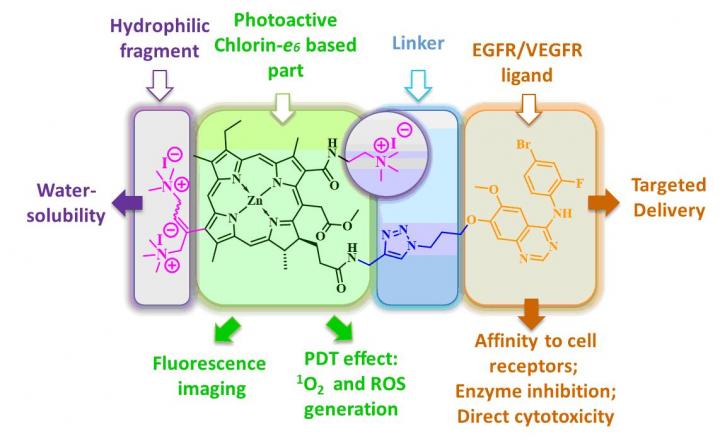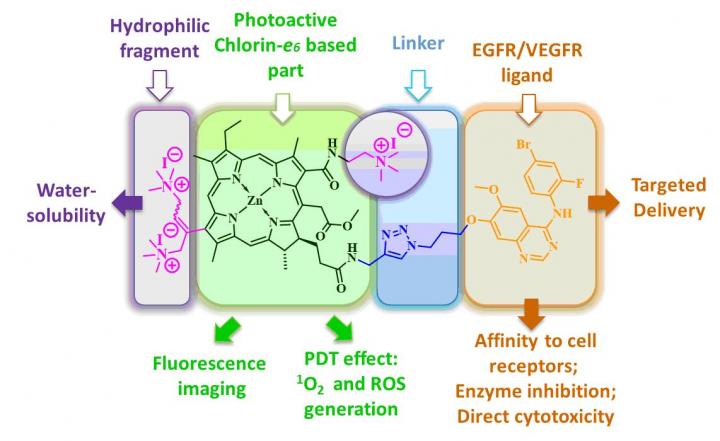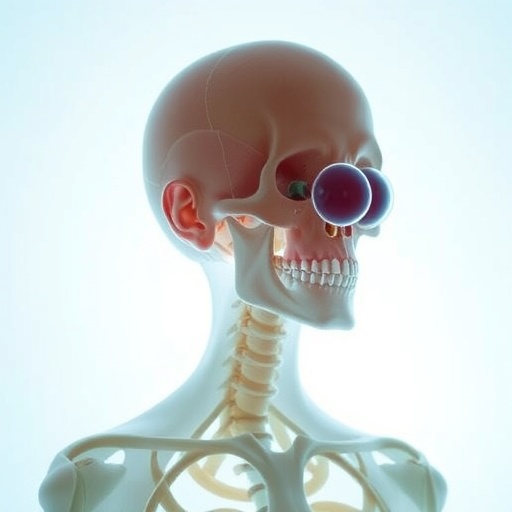
Credit: Lobachevsky University
A team of researchers from Lobachevsky University (Nizhny Novgorod, Russia) headed by Professor Alexei Fedorov, Chair of the Organic Chemistry Department, is working to create a new generation of targeted anti-cancer drugs for photodynamic therapy.
Today, there are many different ways to fight cancer. However, due to a number of factors, scientists will have to go a long way to achieve the final "victory" in this struggle. The problem is that every case of cancer is unique in its own way and there is no single winning treatment strategy. Doctors can try to combine different therapies and observe the best response to their combination.
According to Alexei Fedorov, one of the widely used treatment methods is photodynamic therapy. "In this method, a special substance, a photosensitizer that is injected into the bloodstream or applied to the affected area of the skin, is used to destroy tumors. When this molecule is activated by light, a number of chain processes are initiated that result in the death of tumor cells", – Fedorov notes.
However, there are some problems associated with the application of this approach. Currently existing photosensitizer drugs, along with a number of serious advantages, have one significant drawback: the selectivity of their accumulation in tumor tissue is very low. In other words, when these drugs are administered to the patient, they are distributed almost evenly between healthy tissues and those affected by tumors. It is quite obvious that this balance should be shifted towards predominant accumulation in tumors. Current efforts of researchers in many countries are focused on achieving this goal.
To address this problem, the team of Prof. Fedorov used the concept of the "chemistry of conjugates", molecules consisting of several active parts. The researchers decided to combine the therapeutic properties of classical photosensitizers based on natural chlorophyll with highly selective molecules based on targeted drugs. The idea is simple enough: to synthesize two separate molecules with different but important properties, and then combine them to produce one molecule with a full set of properties. As a result of this approach, a significant improvement in the pharmacological parameters of new drugs was expected, due to the targeted portion of the molecule.
With the help of the scientists from the Research Institute of Chemistry of Macroheterocyclic Compounds (Ivanovo), the starting material was isolated to create the photosensitizer part of the conjugate from the Arthrospira blue-green algae. Based on this material, the targeted compounds were obtained at the Lobachevsky University.
Biological tests conducted on cell and animal models at the Lobachevsky University Biophysics Department have shown that the synthesized molecules accumulate tens of times more efficiently and faster than molecules containing only the photosensitizer part. The results of this work that were published in the European Journal of Medicinal Chemistry in January 2018 open up the possibilities for creating a new class of drugs for photodynamic therapy.
However, this was just the first stage of the project. After obtaining the initial positive results, a vast field opens for optimizing the structure of the molecule in order to reduce the toxicity of drugs and to increase their selective effect on tumor tissues.
Currently, work is under way to create the next generation of photosensitizer conjugates that will surpass their predecessors in most aspects. Later, preclinical trials are planned for the most effective new compounds.
###
Media Contact
Nikita Avralev
[email protected]
http://www.unn.ru/eng/





